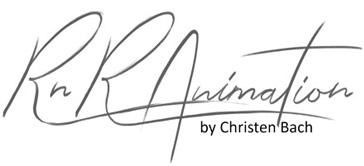Format: Virtual reality – Research & Development
For the past few years, I have been exploring the possibilities of using virtual reality as a tool to concept develop for traditional animation pipelines (2d & 3d)
I have a background in classical animation – and over the years I have been so fortunate to be working extensively with 3D as well. However, I have always felt that both these mediums have their limitations. In 3D I like the freedom of being able to navigate in space. You can do incredibly creative things with it, but I always found the workflow more technical than creative. I always felt like I was building towards an idea instead of executing it – And VR closes that gap for me. You can work extremely intuitively (and very fast) and still have the luxury of spatiality.
VR perfectly matches the way my brain constructs both narrative and visuals. One of the things I am most excited about is using VR as a concept developing tool for 2D animation. When creating concept art in Photoshop I often miss being able to explore the imagery: You are committed to the composition and angle you have chosen. VR animation programs like Quill or AnimVR inherently have the 2D aesthetic built in – so being able to create small quick dioramas in VR that you can navigate around – and play around with – opens a whole new dimension in the development phase.
All this has the added benefit that you can export everything into a 3d program of your choosing (like C4d, Blender, Maya etc.). Here you can integrate it into your 3d scenes, relight it, manipulete the textures and render it back out using render engines like Octane or Redshift.
Below are 2 examples: The first is a grab taken directly from Quills viewport. The second is rendered through the Cycles physically-based engine in Blender.
The VR workflow is very intuitive, and you can create something quite complex extremely quickly. It basically combines the workflow of 2D, 3D and stop motion into one neat little package. This makes it an extremely powerful tool for research and development.
There are advantages in the VR workflow that would benefit almost every stage of an animation production – from layout to storyboarding to final animation.
